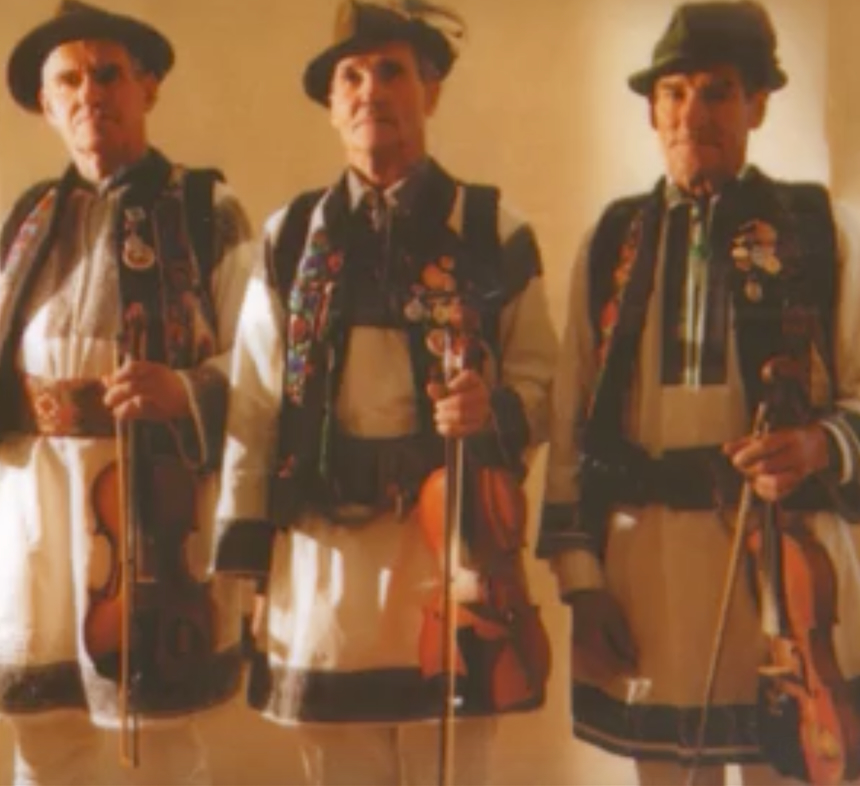
Prylypchan brothers

Prylypchan brothers
Prylypchan brothers
Spyrydon Ivanovych Prylypchan (1923–2007)
Kyrylo Ivanovych Prylypchan (1919–2003)
Luka Ivanovych Prylypchan (1926–1994)
village of Sarata, Putylа district, Chernivtsi oblast
The brothers were born in the village of Sarata of the Shepit village council in Bukovyna. There were four other children in the family. From an early age, all three brothers had an immense desire to study music, and play the fiddle in particular. Knowing this, their father Ivan bought them fiddles, which at the time were very expensive. The boys began studying with the distinctive musicians who lived in Sarata at the time, Moisa Vovchuk and Mohar Stefan, and Yosyp Pursheha, who lived in the village of Seliatyn. The talented brothers quickly mastered their instruments. Soon, they were getting invitations to play at weddings, baptisms, and church festivals, which allowed them to perfect their playing. Spyrydon, whose always played lead, was especially skilled. He also turned out to be a good organizer and leader for the family trio.
Mykhailo Khai, PhD in art history:
“The phenomenon of the uniform triple (fiddle) play of the brothers Spyrydon, Kyrylo, and Luka Prylypchan has hovered over Ukraine (and, actually, the world) since the then young folklorist Ihor Matsiievsky released their record on the famous Melodiya label in the late 70s. It introduced the world to, not only the glorious tradition of supporting-voice polyphonic singing from the village Kriachkivka in the Poltava region, but also the equally original and previously unknown primary syncretic principle of instrumental group music—ensemble play on three violins.
“The syncretic specificity of this music affirms that the tradition of Ukrainian Hutsuls, Pokutians, and western Podolians, enriched by the traditional stylistics of the Balkans and Alps, Tatras, and Carpathian Beskids, as well traditions from the east (incidentally, Klyment Kvitka believed reached Ukraine not only via Crimea, but also Europe), gave rise to this amazing aesthetic of highly developed, fiddle folk professionalism.”